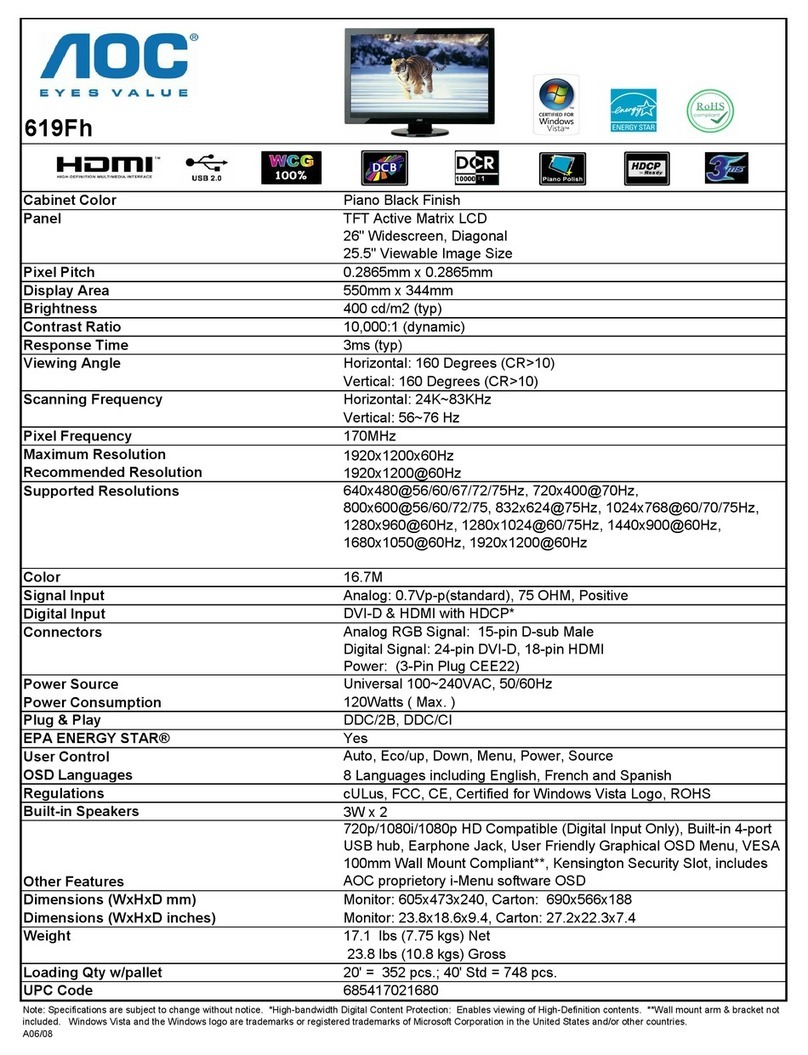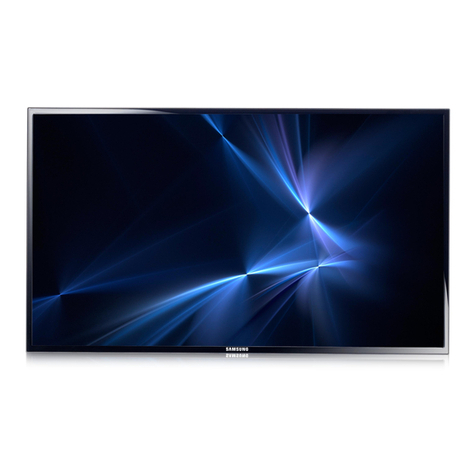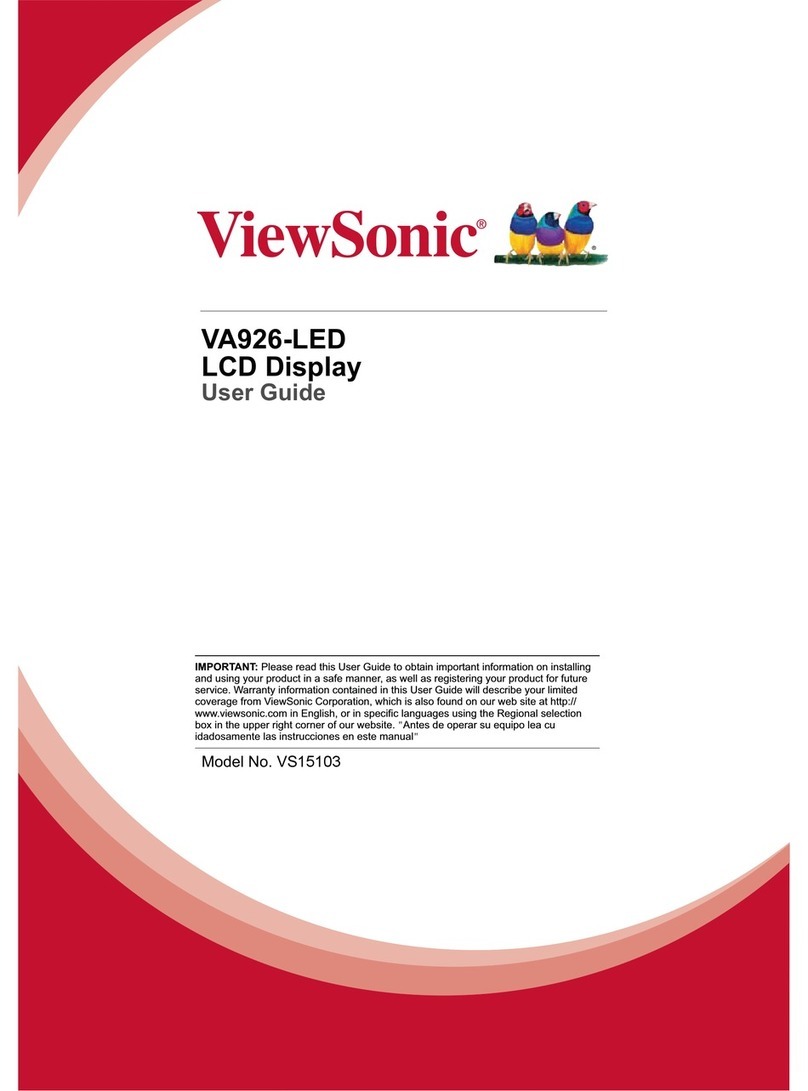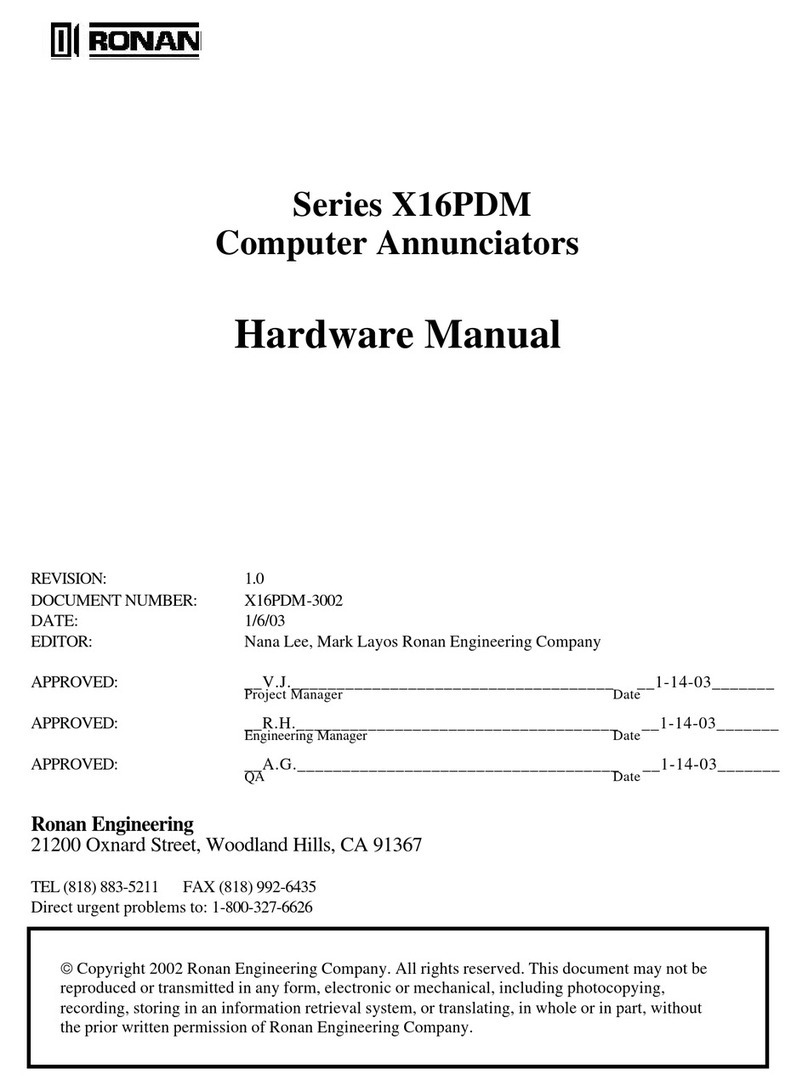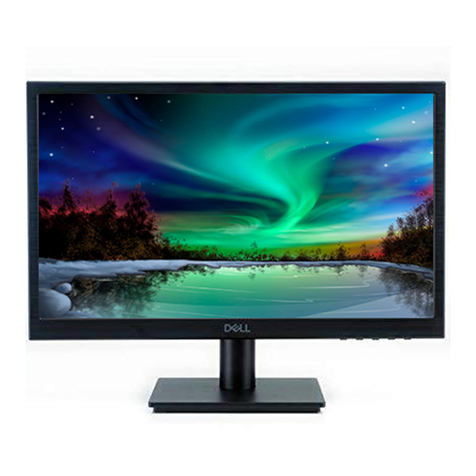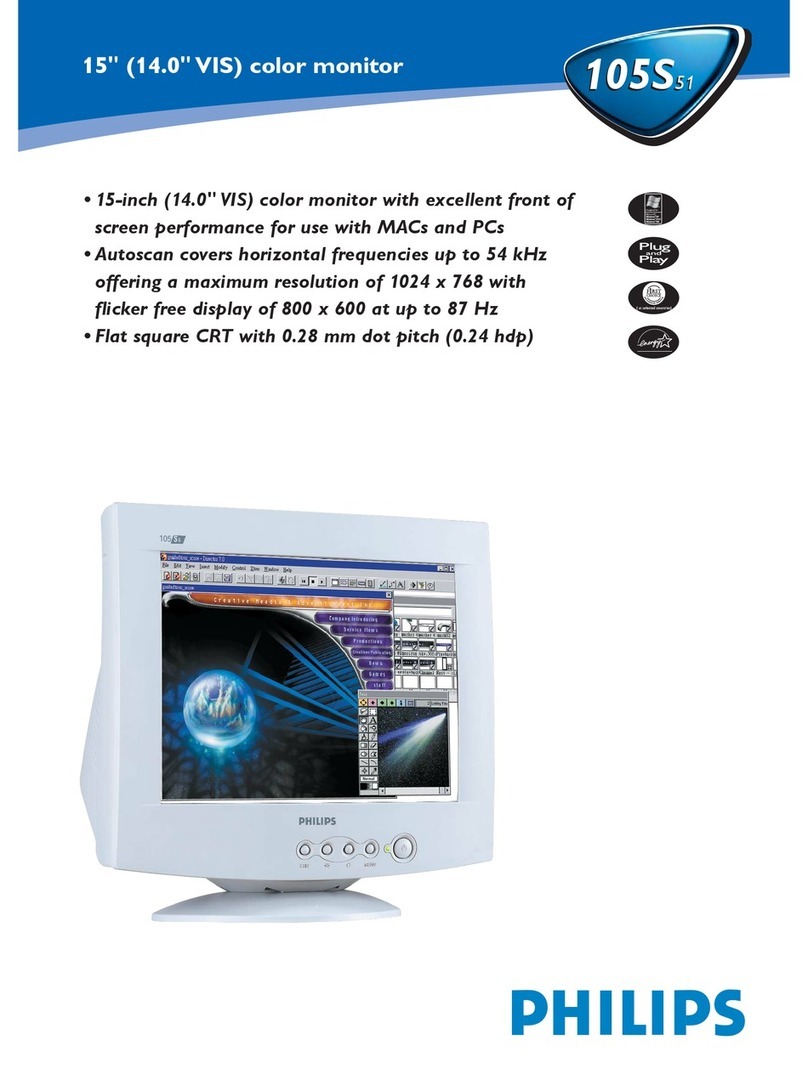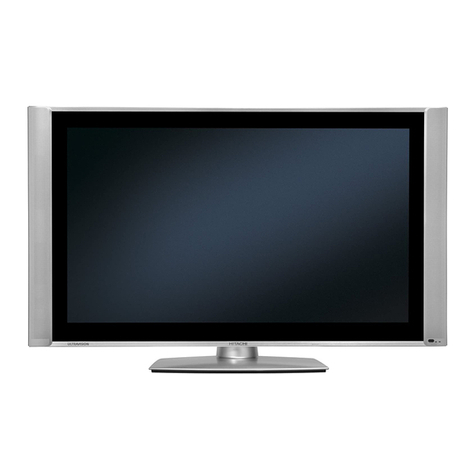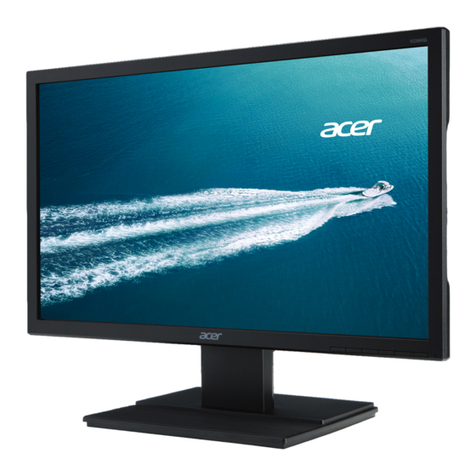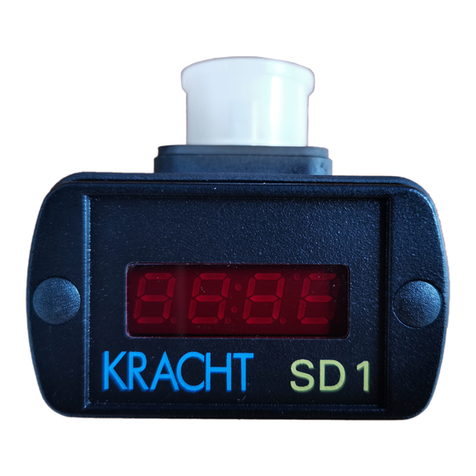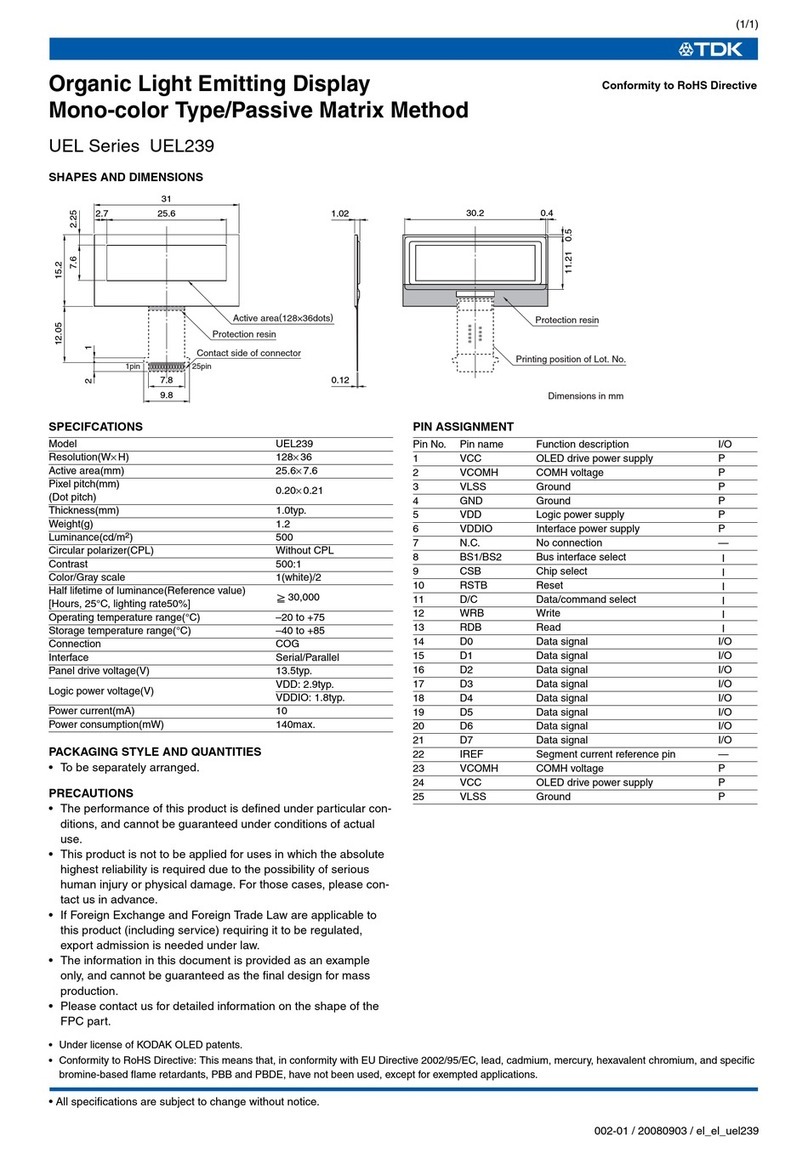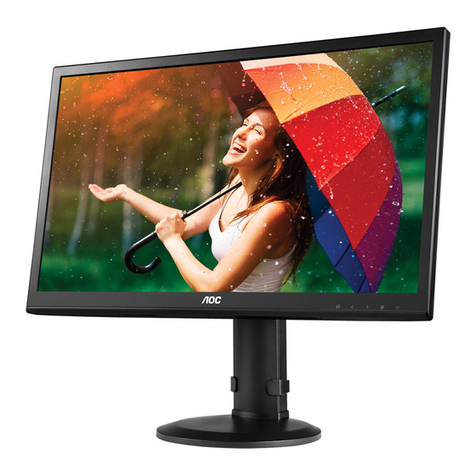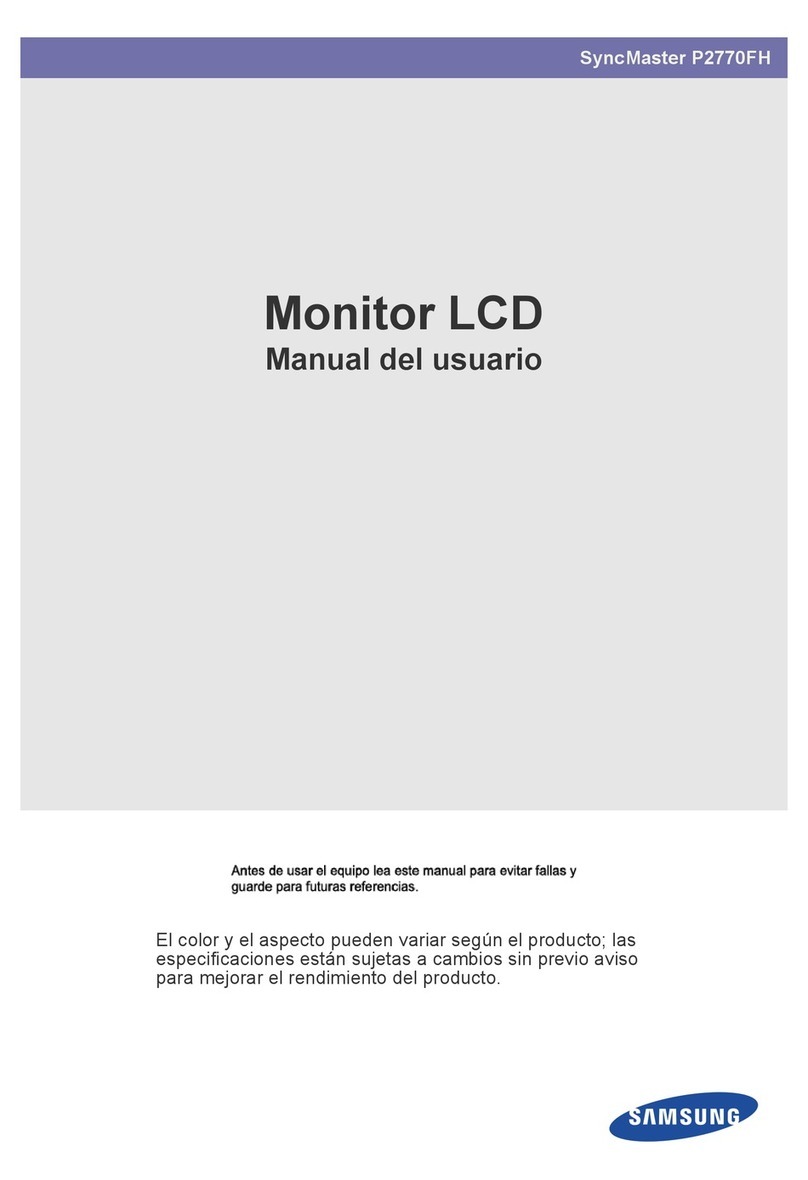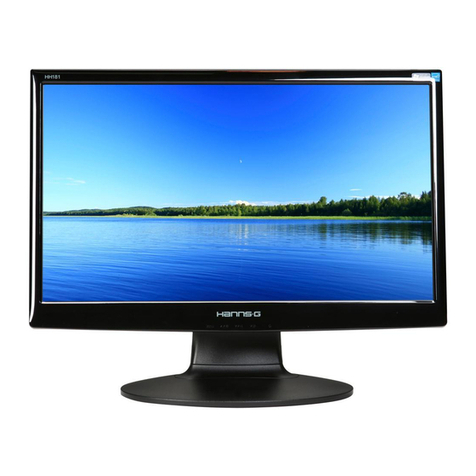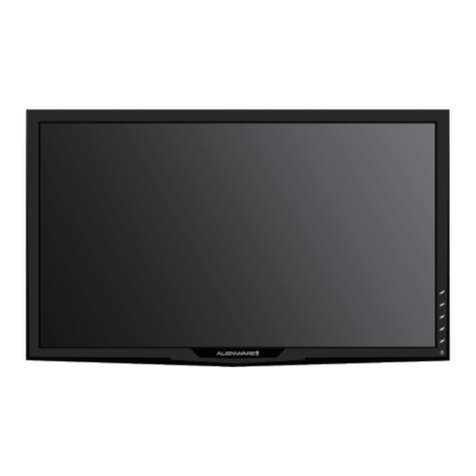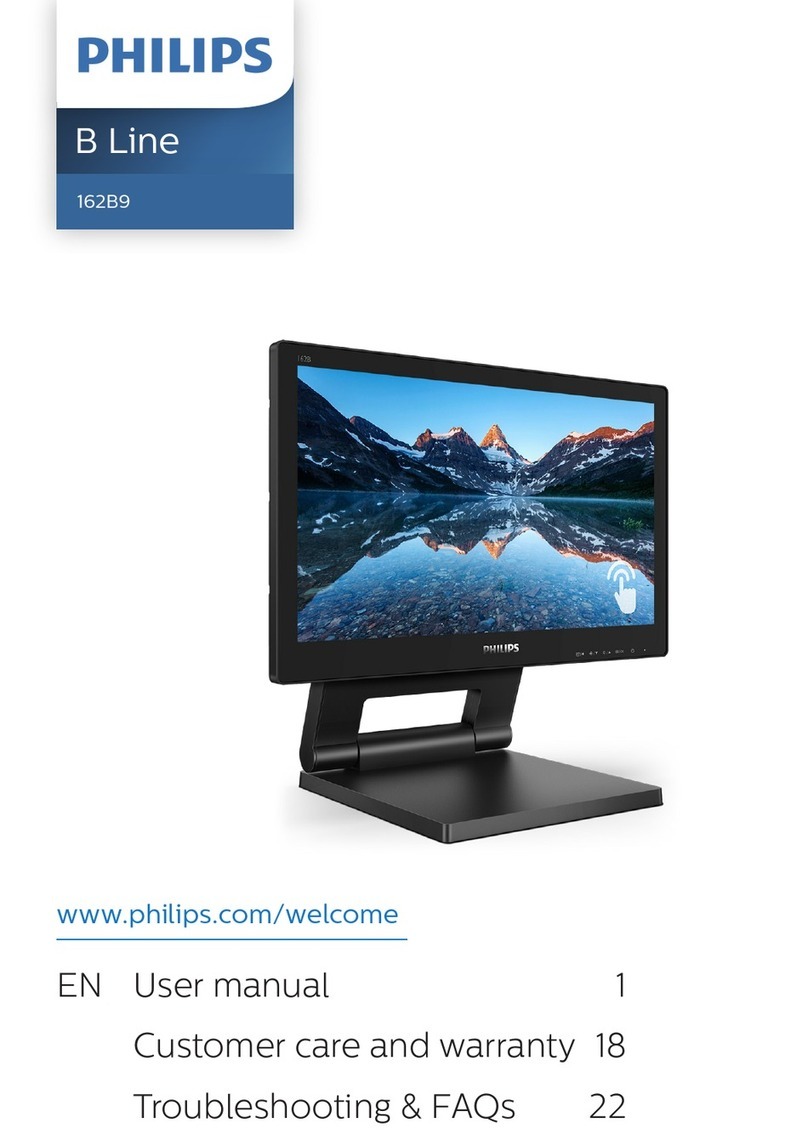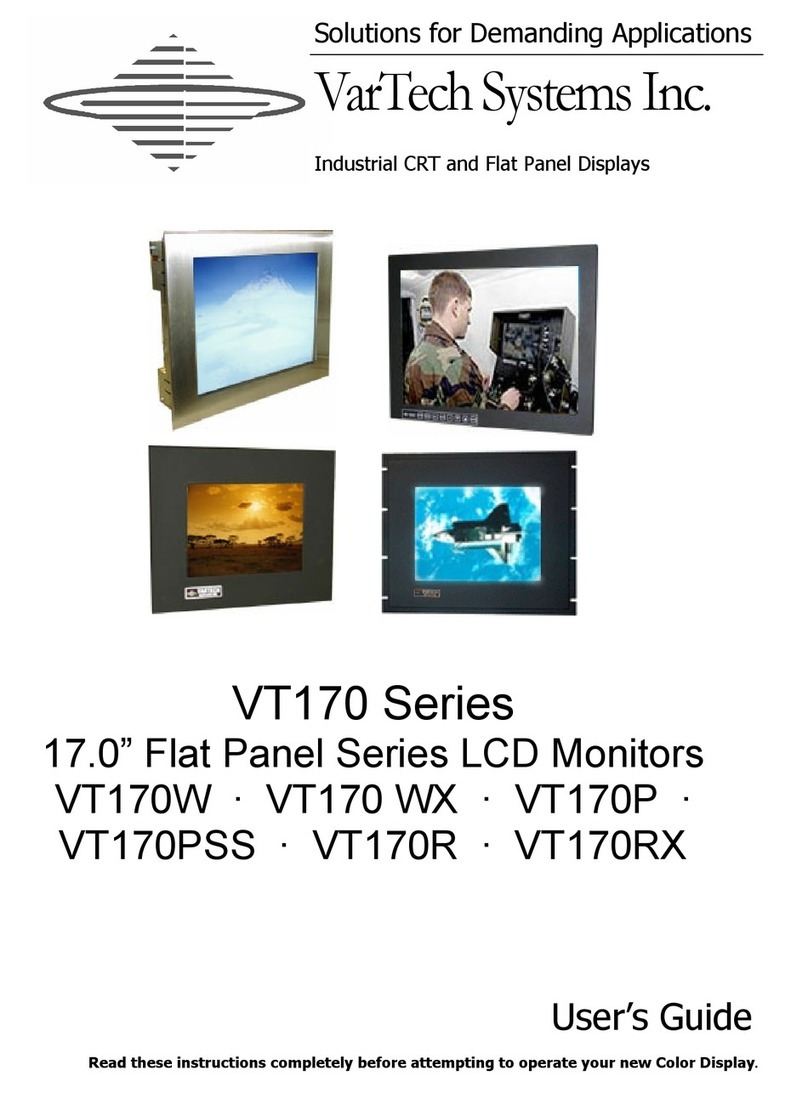Embedded Artists LPC4088 User manual

LPC4088 Display Module - User’s Guide
Copyright 2015 © Embedded Artists AB
EA2-USG-1403 Rev A
LPC4088 Display Module
User’s Guide
Get Up-and-Running Quickly and
Start Developing Your Application On Day 1!

LPC4088 Display Module - User’s Guide
Page 2
Copyright 2015 © Embedded Artists AB
Embedded Artists AB
Davidshallsgatan 16
211 45 Malmö
Sweden
info@EmbeddedArtists.com
http://www.EmbeddedArtists.com
Copyright 2015 © Embedded Artists AB. All rights reserved.
No part of this publication may be reproduced, transmitted, transcribed, stored in a retrieval system, or
translated into any language or computer language, in any form or by any means, electronic,
mechanical, magnetic, optical, chemical, manual or otherwise, without the prior written permission of
Embedded Artists AB.
Disclaimer
Embedded Artists AB makes no representation or warranties with respect to the contents hereof and
specifically disclaim any implied warranties or merchantability or fitness for any particular purpose.
Information in this publication is subject to change without notice and does not represent a
commitment on the part of Embedded Artists AB.
Feedback
We appreciate any feedback you may have for improvements on this document. Please send your
comments to support@EmbeddedArtists.com.
Trademarks
All brand and product names mentioned herein are trademarks, services marks, registered
trademarks, or registered service marks of their respective owners and should be treated as such.

LPC4088 Display Module - User’s Guide
Page 3
Copyright 2015 © Embedded Artists AB
Table of Contents
1Document Revision History 5
2Introduction 6
2.1 Features 6
2.2 ESD Precaution 7
2.3 Warranty Hints and General Handling Care 7
2.4 Code Read Protection 8
2.5 CE Assessment 8
2.6 Other Products from Embedded Artists 8
2.6.1 Design and Production Services 8
2.6.2 OEM / LPCXpresso / QuickStart Boards and Kits 8
3Getting Started 9
3.1 Usage Models 9
3.2 Hardware Overview 11
3.3 Powering 12
3.4 Demo/Test Application 13
3.5 Software Development 13
3.5.1 mbed Framework 13
3.5.2 LPCOpen Framework 14
3.5.3 Setup Own Framework 14
3.6 Program Download 15
3.7 How to Debug 18
4Connectors 19
4.1 Main Interface Connector, J11 19
4.2 mbed micro-B USB Connector, J9 22
4.3 Debug Interface, J7 23
4.4 Tag-Connect Debug Interface, J6 23
4.5 RJ45 Ethernet Connector, J1 24
4.6 USB Host/Device Connectors, J5/J4 24
4.7 RF Module Interface Connector, J2 24
4.8 Memory Card Interface Connector, J3 26
4.9 Expansion Connector, J10 26
5Expansion 27
5.1 General Design Checklist 30
6How to Embed / Integrate the Display Module 33
6.1 Powering 33
6.1.1 +5V Power supply example 33
6.2 Optional VBAT Powering 34
6.3 Interface to Environment 34

LPC4088 Display Module - User’s Guide
Page 4
Copyright 2015 © Embedded Artists AB
6.4 Mechanical Integration 34
6.5 CE Declaration of Conformity 35
6.6 Contact Embedded Artists 35
7Custom Specific Versions 36
8Future Proof Design - BIOS 37
9Things to Note 38
9.1 Current Consumption and Limits of USB Ports 38
9.2 CMSIS-DAP program download time 38
9.3 HDK USB Mass-storage does not work on Mac - LPC4088 locks up 38
9.4 Cannot download binary to LPC4088 via Cortex Debug Connector 38
9.5 Updating the HDK 38
9.5.1 Update Procedure 39
10 Troubleshooting 40
10.1 Powering 40
10.2 Program Download to LPC4088 41
10.3 Using Test Application to Verify Correct Operation 41
11 Appendix: Rev A Board Differences 44
12 Further Information 45

LPC4088 Display Module - User’s Guide
Page 5
Copyright 2015 © Embedded Artists AB
1 Document Revision History
Revision
Date
Description
PA1
2014-12-10
First version.
PA2
2015-01-26
Update all sections for rev B boards. Appendix added to cover rev A
boards.
PA3
2015-01-29
Moved mbed Getting Started Tour to SW manual.

LPC4088 Display Module - User’s Guide
Page 6
Copyright 2015 © Embedded Artists AB
2 Introduction
Thank you for buying Embedded Artists’ LPC4088 Display Module, which is based on NXP’s ARM
Cortex-M4F LPC4088 microcontroller.
This document is a User’s Guide that describes the LPC4088 Display Module mainly from a hardware
point of view. Some basic software related issues are also addressed but there is also a separate
software manual for the software framework that has been created.
2.1 Features
Embedded Artists’LPC4088 Display Module lets you get up-and-running quickly with graphical
applications, the mbed-platform and Cortex-M4F programming in general. Communication interfaces,
large on-board memories and LCD controller/display enables graphical user interface (GUI) and
communication gateway designs. On-board connectors and industrial design makes the module
perfect for product integration.
The features of the display module are:
Several display options
(like 4.3" color TFT LCD, 480x272 pixels, and 5" color TFT LCD, 800x480 pixels)
Resistive or capacitive touch panel with integrated controller to off-load the MCU
LCD backlight voltage generator, controlled via PWM signal
16- and 24-bit color depth supported
120 MHz Cortex-M4F LPC4088 MCU from NXP
MCU core has floating point and DSP support in hardware
On-module memories
512 kB LPC4088 on-chip flash
96 kB LPC4088 on-chip SRAM
32 MB SDRAM (32-bit databus width for high bandwidth access)
16 MB QSPI flash on SPIFI interface (for both program code and data)
4032 Byte LPC4088 on-chip E2PROM (for parameter storage)
1 Kbit E2PROM with EUI-48™ number (for Ethernet MAC address)
8 Kbyte E2PROM with BIOS code - future proof design! (see chapter 8 )
Extensive Interfaces and Peripherals
100/10 Mbps Ethernet with RJ45 connector
USB Host interface with USB-A connector
USB Device interface with mini-B connector
20 pos XBeeTM compatible connector for RF module add-on
Very simple expansion for custom specific I/O via 46 pos, 100 mil pitch pin header
(second USB interface, UART, SPI, I2C, ADC, DAC, CAN, GPIO, timer, etc)
LPC4088 On-chip RTC, with super capacitor backup
uSD/transflash memory card interface for optional memory capacity
Reset generation, 4 LEDs, pushbutton on P2.10

LPC4088 Display Module - User’s Guide
Page 7
Copyright 2015 © Embedded Artists AB
Debug interfaces
mbed-enabled via on-board HDK (CMSIS-DAP interface, USB drag-n-drop, Virtual COM
port)
10 position SWD/JTAG connector (ARM standard Cortex Debug Connector)
6 position SWD Tag-ConnectTM connector
Powering
On-module +3.3V linear power supply
External +5V supply needed, either via USB or external +5V DC
Optional, external VBAT supply for RTC
Dimensions
Compact size: 123 x 100 mm
Other
Proper ESD protection on communication interfaces
Multilayer PCB design for best EMC performance, with controlled impedance and length
matched routing for critical signals
EMC, EMI and ESD tested
Supported by the mbed SDK and online tools
Supported by professional tools and middleware
Wide/extended temperature range (-20 to +60/70 degrees Celsius, limited by LCD)
ISO 9001:2008 / ISO 14001:2004 produced
Production and shipping compensated for carbon dioxide emission
2.2 ESD Precaution
Please note that the LPC4088 Display Module come without any case/box and
all components are exposed for finger touches –and therefore extra attention
must be paid to ESD (electrostatic discharge) precaution. Only qualified
personnel shall handle the product.
Make it a habit always to first touch the metal surface of one of the USB or
Ethernet connectors for a few seconds with both hands before touching
any other parts of the boards. That way, you will have the same potential as
the board and therefore minimize the risk for ESD.
In general touch as little as possible on the boards in order to minimize the risk of ESD damage.
Note that Embedded Artists does not replace boards that have been damaged by ESD.
2.3 Warranty Hints and General Handling Care
Handle the LPC4088 Display Module with care. The board is not mounted in a protective case/box and
is not designed for rough physical handling. Only qualified personnel shall handle the product.
Connectors can wear out after excessive use.
Do not exercise excessive pressure on the LCD glass area. That will damage the display. Also, do not
apply pressure on the flex cables connecting the LCD/touch screen. These are relatively sensitive and
can be damaged if too much pressure is applied to them.

LPC4088 Display Module - User’s Guide
Page 8
Copyright 2015 © Embedded Artists AB
Embedded Artists products are subject to manufacturer’s guarantee as long as the products are
handled with adequate care and caution and in accordance to this manual.
For exact details about warranty, please read the General Terms and Conditions document that can be
found at http://www.embeddedartists.com/shop/
The warranty does not cover defects caused by improper or inadequate installation, maintenance or
handling by the user, unauthorized modification or misuse, operation outside the specification a non-
compliance of this manual and related documents. In case of doubt, please contact Embedded Artists
prior to intended activity.
Note that Embedded Artists does not replace boards where the LCD has been improperly
handled. Also note that the warranty does also not cover any defects or damages of other
equipment connected to the Embedded Artists product, faulty or not.
2.4 Code Read Protection
The LPC4088 microcontroller has a Code Read Protection function (specifically CRP3, see datasheet
for details) that, if enabled, will make the LPC4088 impossible to reprogram (unless the user program
has implemented such functionality in firmware).
Note that Embedded Artists does not replace LPC4088 Display Modules where the LPC4088 has
CRP3 enabled. It’s the user’s responsibility to not invoke this mode by accident.
2.5 CE Assessment
The LPC4088 Display Module is CE marked. See separate CE Declaration of Conformity document.
The LPC4088 Display Module is a class A product. In a domestic environment this product may cause
radio interference in which case the user may be required to take adequate measures.
EMC emission test has been performed on the LPC4088 Experiment Bundle. Standard interfaces like
Ethernet, USB, serial have been in use. General expansion connectors where internal signals are
made available (for example processor pins) have been left unconnected. Connecting other devices to
the product via the general expansion connectors may alter EMC emission. It is the user’s
responsibility to make sure EMC emission limits are not exceeded when connecting other devices to
the general expansion connectors of the LPC4088 Display Module.
2.6 Other Products from Embedded Artists
Embedded Artists have a broad range of microcontroller based boards that are very low cost and
developed for prototyping / development as well as for OEM applications (i.e., for integration).
Modifications for OEM applications can be done easily, even for modest production volumes. Contact
Embedded Artists for further information about design and production services.
2.6.1 Design and Production Services
Embedded Artists provide design services for custom designs, either completely new or modification to
existing boards. Specific peripherals and I/O can be added easily to different designs, for example,
communication interfaces, specific analog or digital I/O, and power supplies. Embedded Artists has a
broad, and long, experience in designing industrial electronics in general and with NXP’s LPC
microcontroller families in specific. Our competence also includes wireless and wired communication
for embedded systems.
Contact us at info@EmbeddedArtists.com for a discussion about how we can help you!
2.6.2 OEM / LPCXpresso / QuickStart Boards and Kits
Visit Embedded Artists’ web page, www.EmbeddedArtists.com, for information about other products.

LPC4088 Display Module - User’s Guide
Page 9
Copyright 2015 © Embedded Artists AB
3 Getting Started
This chapter contains information about how to get acquainted with the LPC4088 Display Module.
Please read this section first before you start using the board - it will be well spent time!
Embedded Artists' has a family of Display Modules that are self-contained, intelligent modules with
many usage scenarios. There are different display options in the family and new are easily created
based on customer requirements.
There are many reasons to use a display module - all of them will make your life easier and less
stressful and saves your company a lot of money!
Save development time and cost - focus on the application
Being able to start with a proven design gets you started immediately.
oExtensive SW frameworks to start from!
You can focus on your application instead of all infrastructure software.
oEasy to expand HW
If needed, it is simple to add an expansion board that contains specific hardware that
might be needed.
You no longer have to maintain a big platform. You can focus on maintaining the
expansion board that contains your core interfaces.
Long term availability and Future safe design
Embedded Artists offers long term availability of display modules along with a future safe
design principle that allow changing displays on the modules without changing the application
software.
Multiple displays options
Your customers may have different requirements on your product and want different display
options. Or maybe you want to have different product options, involving different display
options.
Either way, the same HW/SW platform can drive many different displays (different sizes and
resolution, different brightness and different touch panel solutions).
Pre-CE tested
The display modules are designed for integration and have been EMC, EMI and ESD tested.
This increase the likelihood for your final product to also pass tests.
On-board debugger
There is an on-board debug interface that simplifies program download and debugging.
3.1 Usage Models
A common usage scenario is to add a display module to an embedded system that already exist.
This embedded system typically has an old user interface that needs to be updated to a more modern
look-and-feel. The display module acts as a standalone front panel that handles the new graphical
Human Machine Interface (HMI). There are several benefits with this solution:
No need for a complete redesign of the hardware and software of the existing embedded
system.
Different display sizes can be offered to customers.
Retrofitting existing systems is possible (sold as an upgrade).
The existing embedded system can exchange high-level commands with the display module
when controlling the graphical elements.

LPC4088 Display Module - User’s Guide
Page 10
Copyright 2015 © Embedded Artists AB
The picture below illustrates this usage scenario.
Figure 1 –LPC4088 Display Module HMI/GUI Usage Scenario
A second usage scenario is to build the complete embedded system around the display module.
The LPC4088 Display Module is built around the LPC4088 MCU from NXP. It has a very capable
Cortex-M4F core, running at up to 120MHz. There is lots of memory, communication interfaces and
expansion possibilities on the module. There are several benefits with this solution:
The core design has already been done. The only thing needed is a the expansion board
design for custom specific interfaces and functions that the core design cannot implement.
oLow total ownership cost - only need to maintain the expansion board
Comprehensive software framework exist - the designer can start the real software
development immediately.
Different display sizes can be offered to customers.
The picture below illustrates this usage scenario. If the display module is a standalone solution, an
expansion board is likely part of the design, but not always. In many cases, the existing interfaces on
the display module are just what is needed. Chapter 5 covers how to design an expansion board
Figure 2 –LPC4088 Display Module Standalone Usage Scenario with Expansion Board
LPC4088 Display Module
Existing embedded system in
need of an HMI/GUI
LCD with resistive
or capacitive touch
panel
Local
MCU
All interfaces with
environment
Communication channel
UART, I2C, CAN, Ethernet,
USB, RF, GPIO
LPC4088 Display Module
Expansion board
LCD with resistive
or capacitive touch
panel
Optional
local
MCU
Expansion Connector, J10
UART, I2C, SPI, I2S, CAN,
USB, ADC, DAC, GPIO
Interfaces with environment
(split between both boards)

LPC4088 Display Module - User’s Guide
Page 11
Copyright 2015 © Embedded Artists AB
3.2 Hardware Overview
The block diagram below presents the major components of the LPC4088 Display Module.
Figure 3 –LPC4088 Display Module Block Diagram
LPC4088 with external memories
In the heart of the design there is the LPC4088 MCU from NXP with associated memory;
32MByte of SDRAM with 32-bit databus access, 16MByte of QSPI serial flash and an
Ethernet MAC address (EUI-48). The amount of memory is more than enough for most
applications. The LPC4088 runs at up to 120MHz and has a Cortex-M4F core.
Display interface
The display interface is the glue between the LPC4088 on-chip LCD controller and the actual
LCD. Both 16- and 24-bit color depth is supported (controlled via a single GPIO pin). 16-bit
color depth supports the 5:6:5 RGB-format.
There is a resistive touch panel controller, AR1021, that can handle the low-level sampling
and filtering of the touch panel samples, hence off-loading the LPC4088 from this task.
The is a DC/DC switched voltage converter that generates a constant current for the display
backlight. The current level can be controlled via a PWM signal to allow software to
implement backlight dimming.
LCD
Different LCDs are supported. Both resistive and capacitive touch panels are supported.
LCDs with capacitive touch panel has on-display touch panel controller.
HDK debug interface
The mbed Hardware Development Kit (HDK) is included (which is part of what makes the
display module an mbed-enabled module). The HDK offers the following features over a
common USB connection (the HDK USB port):
1. USB drag-n-drop programming of the LPC4088. A USB Mass Storage Device (MSD) is
created and the binary image that the compiler creates can just be dragged and dropped
on this drive on the PC-side. The image will then automatically be flashed to the
LPC4088 on the board.
LPC4088 with external memories
32MByte SDRAM (x32 databus width), and
16MByte QSPI (serial flash), EUI-48, BIOS code
Display interface
16/24-bit color depth mux, Backlight generation/control,
Resistive touch panel controller
Communication interfaces
Ethernet, USB, XBee,
memory card interfaces
LCD with resistive or capacitive touch panel
(on-display TP controller if capacitive touch panel)
Expansion
connector
Other
+3.3V Powering
VBAT Powering
Reset generation
Buzzer
4 LEDs
User pushbutton
HDK debug
interface
(mbed)

LPC4088 Display Module - User’s Guide
Page 12
Copyright 2015 © Embedded Artists AB
2. Virtual serial port, which creates a virtual COM port on the PC-side. There is a serial
(UART) channel on the LPC4088 Display Module that can be tunneled over to the PC-
side for debug, logging, statistics or other reasons.
3. CMSIS-DAP debug interface, which basically creates an SW debug interface to the
LPC4088. The CMSIS-DAP interface is supported by major tool vendors.
Communication interfaces
There are multiple communication interfaces, corresponding to LPC4088 key peripherals.
o100/10 Mbps Ethernet interface, including RJ45 connector and ESD protection.
oUSB Host and Device interface, with USB-A and USB-mini B connectors and ESD
protection. Note that Host and Device cannot be active at the same time. For a
second USB channel, use the expansion connector.
oXBee compatible connector of RF module expansion.
ouSD/transflash memory card connector for large memory requirements.
Expansion connector
Several interfaces are available on the easy-to-connect expansion connector. It is a 2x23 pos,
100 mil pitch pin header (male) that allow easy and quick prototyping on an expansion board.
Other
The display module also contains a 3.3V linear power supply, VBAT supply including a super
capacitor, reset generation, buzzer, 4 LEDs and a user push-button.
3.3 Powering
Before start handling and working with the display module, read the general handling precautions
addressed in chapter 2 , especially about ESD precaution.
There are three ways to power the display module, of which the first two are recommended to start
with. An external +5V DC supply is needed. 1-3Amp, depending on what is connected to the display
module (for example, USB Devices and RF modules that consume current).
1) mbed HDK micro-B USB connector, J9
This is the natural way to power the display module during program development and initial
prototyping. The PC USB interface powers the board. Note that long USB cables can give
problems because of too big voltage drops in the cable. Max 1 meter cables with 24 AWG
power cords are preferred. Also note that some laptops have lower current limits on their USB
host ports. An external, powered USB hub can always be used if there is a problem to directly
power the display modules from a USB Host port.
2) Pin 1/2 on main connector J11
This is the natural way to power the display module when it has been deployed/integrated into
the end-product.
3) Power supply on expansion board, via expansion connector, J10
The external 5V DC supply can be integrated on an expansion board to create a mode
compact and self-contained solution. The display module is then powered (+5V DC) via the
expansion connector, J10.
The picture below illustrated where the three powering options can be found on the display module.

LPC4088 Display Module - User’s Guide
Page 13
Copyright 2015 © Embedded Artists AB
Figure 4 –LPC4088 Display Module Powering
3.4 Demo/Test Application
The LPC4088 Display Module is preprogrammed with a demo/test application has been created.
Besides demonstrating the features and capabilities of the display module, it can also be used as a
troubleshooting application.
3.5 Software Development
When starting program development two initial selections must be done - which program framework to
start working in and which tool chain to use. Sometimes the choices are linked together.
Three different framework solutions for the LPC4088 Display Module are presented in the following
subsections. The different tool chains are presented in each sub-section, since the choices are
somewhat different between the frameworks
3.5.1 mbed Framework
The mbed framework[11] is a natural choice for the LPC4088 Display Module since it is an mbed-
enabled board. The mbed framework is briefly described in this subsection. There is a separate
LPC4088 Display Module Software Framework document describing all details. There are other
software framework alternatives as well. The mbed framework has its strengths and weaknesses, just
like any other solution.
The mbed site (http://mbed.org) points to four cornerstones in the framework:
The mbed Software Development Kit (SDK), which is an open source C/C++
microcontroller software platform designed for a suitable level of hardware abstraction to
simplify microcontroller programming.
Expansion connector
J10, pin 35/37/39
mbed USB connector
(micro-B)
J9
Main interface connector
J11

LPC4088 Display Module - User’s Guide
Page 14
Copyright 2015 © Embedded Artists AB
The mbed Compiler is a powerful online IDE that is tightly integrated with the mbed SDK and
Developer's Website (mbed.org).
The mbed Hardware Development Kit (HDK), which is an interface design that provides
simple USB drag-n-drop programming and CMSIS-DAP debug interface for the LPC4088
microcontroller. The LPC4088 Display Module has an on-board HDK.
The mbed.org community, with extensive documentation in the form of handbooks,
cookbooks, project pages, User Forums for getting help and advice from other mbed users,
etc.
The mbed Compiler gives you instant access to lightweight C/C++ microcontroller development. It is an
online web application IDE (Integrated Development Environment) that you can log in from anywhere
and work on Windows, Mac, iOS, Android or Linux. For a quick guide how to write code, compile and
download to the LPC4088 Display Module, see chapter Fel! Hittar inte referenskälla..
The mbed Compiler has some limitations, mainly when it comes to debugging. There are alternatives
to the online compiler when more professional program development and debugging is needed. The
mbed framework and the application code can be exported from the online compiler and imported into
an offline tool chain. For more details, see here: http://mbed.org/handbook/Exporting-to-offline-
toolchains
Currently there are guides for exporting to:
uVision
LPCXpresso IDE
CodeSourcery
GCC ARM Embedded
IAR Embedded Workbench
Under these tool chains it is possible to perform professional debugging with breakpoints, inspecting
variable values, dumping memory regions and even trace the program execution flow (provided the
debug probe supports the feature). Remember that the LPC4088 Display Module has an on-board
debug interface so an external debug probe is in general not needed. Most tool chains support the
CMSIS-DAP standard now.
3.5.2 LPCOpen Framework
LPCOpen[10] has been created by NXP. It is a platform consisting of a large number of libraries and
examples that allows you to get started quickly. The platform uses common APIs that work equally
across all NXP microcontroller families. It supports the common development tool chains; uVision from
Keil/ARM, Embedded Workbench from IAR, and LPCXpresso IDE from NXP.
There is a core driver library containing three important sections:
Chip Driver Layer - Peripheral drivers for the microcontroller
Board Layer - Board specific functions and low level setup code
Examples - Chip family specific examples for peripherals, interfaces, libraries, etc.
LPCOpen also contains some important larger program packages/libraries, like FreeRTOS, LWIP
(TCP/IP stack), USB driver and graphical library - all together with bigger project examples.
Embedded Artists has created an LPCOpen port for the LPC4088 Display Module.
3.5.3 Setup Own Framework
There is always the option to roll your own solution and start from scratch to build the needed
framework. Most tool chains (LPCXpresso IDE from NXP, uVision from Keil/ARM, Embedded

LPC4088 Display Module - User’s Guide
Page 15
Copyright 2015 © Embedded Artists AB
Workbench from IAR, etc.) can create empty program skeletons. Besides an empty main()-function,
only the most important startup code for initializing clocks and the very basic functions in the
microcontroller is given.
This approach is definitively a possibility and might be a preferred option if for example there is legacy
code to be ported to the new platform. The approach will require more reading, and understanding, of
the LPC4088 User's Manual from NXP.
3.6 Program Download
This section describes some basic methods for downloading application code to the LPC4088. Note
that this section does not describe how to create the application code (write the program and compile
it). It is assumed that a binary file exist that represent the application program.
Most program development environments create files that also contains debug information (*.elf file or
*.axf file). This way, the integrated debuggers have the information needed when debugging. When
these files are stripped from the debug information and just the pure binary file is left, it is often also
called hex-file, which is a file format that Intel created a long time ago. It can also be a pure binary file
(which is typically called a bin-file).
Note that the on-line mbed compiler create pure binary files without debug information (since this
environment does not support debugging in the traditional meaning.
There are four basic methods for program download (the top two methods are the recommended that
will give a quick start since it is support by on-board functionality):
-On-board HDK: USB drag-n-drop
The on-board HDK (see section 4.2 for more information) creates a USB drag-n-drop
programming function. A USB Mass Storage Device (MSD) is created and the binary image
that the on-line mbed compiler creates can just be dragged and dropped on this drive on the
PC-side. The image will then automatically be flashed to the LPC4088 on the board.
Note that any binary file can be dragged and dropped - and programmed. It is not only the on-
line mbed compiler that can generate binary files. Normally, however, the generated files also
contains debug information. These files must be stripped to generate a binary file that can
be used. See the documentation for the used program development environment for details.
-On-board HDK: CMSIS-DAP Interface (SWD/JTAG)
The on-board HDK (see section 4.2 for more information) also creates a CMSIS-DAP debug
interface, which basically creates a debug interface to the LPC4088. The CMSIS-DAP
interface is supported by major program development tool vendors.
This interface is not the fastest available (due to limitation of the LPC11U35, the MCU that
implements the HDK), but it works very well for hobbyists and semi-professional users. For
higher download speed, needed for professional use, an external debug probe is
recommended. See next alternative for more details.
-SWD/JTAG via External Debugger
The LPC4088 Display Module also offers direct access to the Serial Wire (SW) debug
interface of the LPC4088 MCU. Any external debug probe that supports the LPC4088 and the
10-pin SW interface, called the Cortex Debug Connector, can be connected to this interface.
The cheap, 15 EUR, LPC-Link 2 debug probe directly supports the 10-pin connector creates a
powerful, professional quality debug interface. The first picture below illustrates how LPC-
Link2 is directly connected to the Cortex Debug Connector on the LPC4088 Display Module
pcb. The second picture illustrates when the Tag-ConnectTM pads are used instead. A special
cable (from Tag-Connect) is used.

LPC4088 Display Module - User’s Guide
Page 16
Copyright 2015 © Embedded Artists AB
Figure 5 –LPC-Link2 Connected To LPC4088 Display Module

LPC4088 Display Module - User’s Guide
Page 17
Copyright 2015 © Embedded Artists AB
Figure 6 –LPC-Link2 Connected To LPC4088 Display Module via Tag-Connect Cable
There are many other SWD/JTAG interfaces on the market, for example ULINK and ULINK-
Pro from Keil, JLINK from Segger, I-Jet from IAR. There is also OpenOCD, which is an open
source project. Consult the respective manual for the SWD/JTAG interface used to get
instructions how to download a hex/binary file via SWD/JTAG.
Using this method, the application can be downloaded to (internal) SRAM, to (internal) flash
memory or (external) qspi flash. Note that the debugger needs special download functionality
in order to download to external qspi flash memory. Check the supported functions in the
program development environment/IDE that is used.

LPC4088 Display Module - User’s Guide
Page 18
Copyright 2015 © Embedded Artists AB
-ISP over UART
ISP is short for In-System Programming. The LPC4088 contains a bootloader in ROM that is
activated by pulling pin P2.10 low during reset. This is easily accomplished by pressing the
user pushbutton during reset/power-up. UART0 pins P0.2 (U0_TXD) and P0.3 (U0_RXD) are
then used to download the program . An application is needed on the PC for downloading the
application code, for example Flash Magic (http://www.flashmagictool.com/).
This method is only included to make the list of options complete, but it is not recommended
since the other options are simpler and faster alternatives. Also note that the ISP bootloader
cannot program the on-board qspi flash.
It is possible to use the HDK virtual COM port to communicate with the UART channel on
P0.2/P0.3 (called HDK_MBED_TX and HDK_MBED_RX, respectively, in the schematic).
3.7 How to Debug
The debug options are given by the development environment selected. If mbed is selected as
framework and the on-line compiler is used, the debug options are very few - basically only printf()-
style and flashing LED debugging. This is not acceptable for professional users. If the mbed project is
exported to an external development environment, for example the LPCXpresso IDE, then the full
debug options are available (like breakpoints, watch-points, etc).
The on-board HDK implements a CMSIS-DAP debug interface that is supported by most development
tool vendors. It is not as fast as an external debug probe would be but still acceptable for many
applications. For more information, see section 3.6 .

LPC4088 Display Module - User’s Guide
Page 19
Copyright 2015 © Embedded Artists AB
4 Connectors
This chapter contains information about all connectors on the display module. The picture below locate
the connectors that are described in the subsequent sections.
Figure 7 –LPC4088 Display Module Connectors
4.1 Main Interface Connector, J11
This is the main interface connector for the board. It has six positions according to table below. NOTE
that position numbering marking on connector J11 is not correct. See Figure 11 above for
correct numbering.
Position
Usage
1
Vin - external +5V supply.
Consult the display module datasheet for details about valid voltage range, current
consumption and allowed voltage ripple/noise.
Depending on configuration and application, current consumption can vary between
Expansion connector
J10
Pin 1/2 - 45/46 (left to right)
SWD debug
connector
J7
Tag-Connect
connector
J6
mbed USB
connector
(micro-B)
J9
USB Device
connector (mini-B)
J4
USB Host
connector (A)
J5
RJ45 Ethernet connector
J1
Main interface connector
J11
Pos 6-1 (left to right)
NOTE that position numbering
marking on connector is different.
Correct is Pos 6-1 (left to right).
XBee interface
connector
J2
transflash/
uSD connector
J3

LPC4088 Display Module - User’s Guide
Page 20
Copyright 2015 © Embedded Artists AB
1-3 Amp. Expansion board, LCD backlight, RF module, Ethernet and USB Host
interfaces can all make significant contribution to the current consumption.
A Schottky series diode on the display module protects against reverse polarity.
2
GND - ground for Vin supply
3
VBAT - optional external supply for LPC4088 real-time clock (RTC).
Consult the display module datasheet for details about valid voltage range and
current consumption.
If no external supply exist, leave position open.
Note that an external supply is not (trickle) charged from the board internal.
4
GND - ground for VBAT supply
5
P0.0 - connected via 100 ohm series resistor to pin P0.0 on the LPC4088 MCU.
0-3.3V logic, 5V tolerant. Functionality controlled by firmware running on LPC4088.
Can be UART-TXD (external transceiver needed for RS232 compatibility).
Can be CAN-RD (external CAN transceiver needed).
Can be I2C-SDA (on-board 5K pull-up resistor).
Can be general GPIO.
6
(closest to
RJ45 Ethernet
connector, J1)
P0.1 - connected via 100 ohm series resistor to pin P0.1 on the LPC4088 MCU.
0-3.3V logic, 5V tolerant. Functionality controlled by firmware running on LPC4088.
Can be UART-RXD (external transceiver needed for RS232 compatibility).
Can be CAN-TD (external CAN transceiver needed).
Can be I2C-SCL (on-board 5K pull-up resistor).
Can be general GPIO.
J11 is a quick and reliable wire-to-board connector from AVX, series 9276
(http://www.avx.com/docs/Catalogs/9276.pdf). Solid or stranded wires between 18-24 AWG are
inserted directly into the connector. The table below lists the 18-24 AWG equivalents in inch, mm and
mm2.
AWG
Diameter in inch
Diameter in mm
Area in mm2
18
0.040 inch
1.02 mm
0.823 mm2
20
0.032 inch
0.81 mm
0.512 mm2
22
0.025 inch
0.64 mm
0.326 mm2
24
0.020 inch
0.51 mm
0.205 mm2
The absolute maximum diameter of a wire is 1.2 mm. The maximum diameter for the insulator is 2.1
mm.
The picture below (from the AVX connector's datasheet) illustrates how to insert a wire. The strip
length (removed insulation) shall be 4-5mm. Stranded wires shall be twisted together before insertion.
Other manuals for LPC4088
2
This manual suits for next models
3
Table of contents
